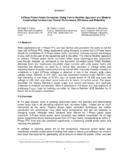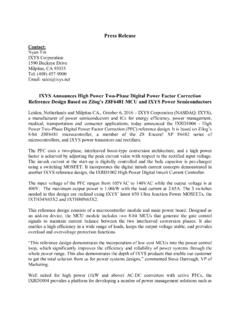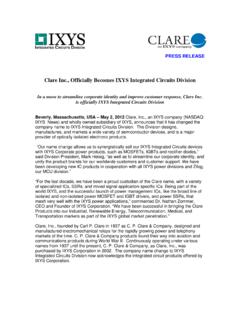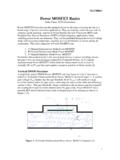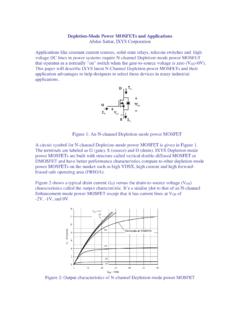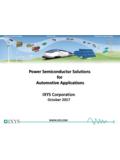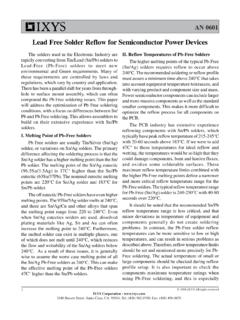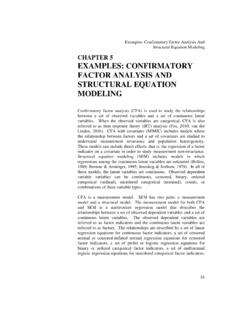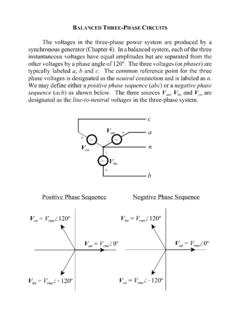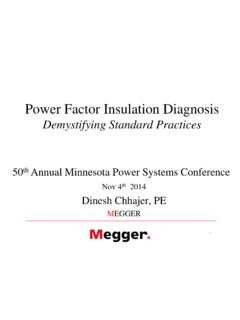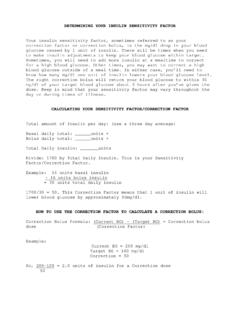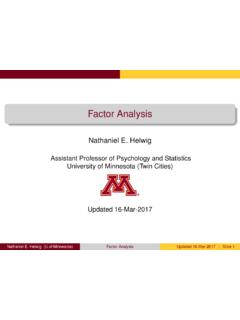Transcription of 3-Phase Power Factor Correction, Using Vienna Rectifier ...
1 1 3-Phase Power Factor Correction, Using Vienna Rectifier Approach and Modular Construction for Improved Overall Performance, Efficiency and Reliability1 D. Pathak, Mr. Ralph E. Locher, Prof. Himanshu S. Mazumdar, Senior Applications Engineer, Director, Applications Engineering, Head, Computer Science Lab., IXYS Corp., Santa Clara, CA IXYS Corp., Santa Clara, CA Physical Research Laboratory, Ahmedabad-380009, INDIA Abstract: While applications for 1-Phase PFC are now familiar and prevalent, the same is not the case with 3-Phase PFC.
2 Many equipments Using kilowatts of Power from 3-Phase mains should be candidates of 3-Phase Power Factor correction, because several advantages ensue, both to the user of the equipment and to the utility. The Vienna Rectifier approach to achieve 3-Phase Power Factor correction offers many advantages and convenient, user-friendly features as compared to the two-level, six-switch boost PWM Rectifier . Amongst them are: continuous sinusoidal input currents with unity Power Factor and extremely low distortion; no need for a neutral wire; reduction in voltage stress and switching losses of Power semiconductors by almost 40%; immunity towards variation or unbalance in mains 3-Phase voltages or absence of one of the phases; wide mains voltage range: 320 VAC to 575 VAC; very low conducted common-mode EMI/RFI.
3 Very high efficiency of the order of , say, for Power levels of 10 KW and input line voltage of 400 VAC and short circuit immunity to failure of control circuit. The paper describes the Vienna Rectifier s Power stage and control techniques, with particular emphasis on modular construction. What is proposed in this paper is a new approach of employing Fuzzy Logic for building controller for Vienna Rectifier DCB Modules for 3-Phase AC to DC Power conversion. Overview In the past decade, there is growing awareness about line pollution and deteriorating Power Factor due to all pervading inductive and non-linear loads.
4 Utilities are as much concerned as the users. Passive Power Factor correction techniques are neither convenient nor economical; they need bulky components and are not adaptive to changing needs. Although many solutions were offered for 1-Phase Power Factor correction, 3-Phase active Power Factor correction was seldom considered. As all high Power equipments derive electrical Power from 3-Phase mains, incorporating an active 3-Phase PFC front end can contribute significantly in improving overall Power Factor and reducing line pollution.
5 In addition to lowering Power bill to the consumers, improved Power Factor also contributes towards conservation of energy and helps in reducing air pollution, by virtue of less fossil fuel required for generating same amount of electrical Power . Other resultant 1 Paper originally presented at the 2003 Power Electronics Conference in Long Beach, CA. IXAN0001 IXAN0001 2effects are lower I2R losses, steadier terminal Voltages, released system capacity and reduced cable & switchgear sizes.
6 Active PFC front ends also help meet the IEEE 519-92, IEC-555 and European EN 61000-3-2 standards for allowable harmonic contents of mains. Advantages Although there are some passive and active 3-Phase PFC solutions, Vienna Rectifier is unique by virtue of its embodiment of several advantages: 1. It is a 3-Phase , three level PWM Rectifier , utilizing three MOSFETS, with controlled output Voltage; three wire input, not requiring any connection to Neutral. 2. It is a dual boost type PFC with continuous sinusoidal input current and unidirectional Power flow 3.
7 It needs only three active switches, MOSFETS 4. It is Operational even in presence of unbalanced mains or only two phases. 5. Total switching losses are reduced by a Factor of six, assuming switching frequency below 50 KHz. 6. Any malfunction in control circuit does not manifest itself in short circuit of output or PFC front end. 7. Sinusoidal input currents with Power Factor = , THD<5% and overall efficiency > 97% are obtainable with current designs. As can be seen, Vienna Rectifier is the 3-Phase PFC solution that needs to be fully exploited.
8 Readymade Vienna Power Semiconductor modules, embodying MOSFETS+ FREDS to make a stand alone Direct Copper Bonded Power Circuit, make it quite convenient and user-friendly. Powerful, yet inexpensive, microcomputers and DSPs make it attractive to design compact controllers for the Vienna Rectifiers. A new approach of employing Fuzzy Logic for building embedded controller for Vienna Rectifier for 3-Phase AC to DC Power conversion is proposed here. Applications A large number of industrial, telecom and computing equipments now use 3-Phase mains Power .
9 Salient amongst them are: 1. and Drives 2. Telecommunication Power Supplies 3. Uninterruptible Power Supplies 4. Air Conditioning Units 5. Large Computer Installations 6. Power supplies for all industrial uses such as welding, surface treating, motion control, large appliances and process control 7. Transmitters and Radar Transmitters and repeater stations IXAN0001 38. Regulated and tracking +350V and 350 VDC, for high Power bidirectional servo amplifiers for driving heavy-duty critical loads such as Antenna Tracking and Positioning systems.
10 All the above and many more such systems are good candidates for Using Vienna Rectifiers for achieving performance improvements as per the advantages listed in Vienna Rectifier Modus Operandi Vienna Rectifier as shown in Figure 1, was originally developed at the Technical University Vienna . It comprises a semiconductor switch, say, a MOSFET in each phase leg of a 3-Phase diode bridge. By adjusting the width of the pulse that turns ON the MOSFET, corresponding line current is forced to be sinusoidal and in phase with the Voltage.
